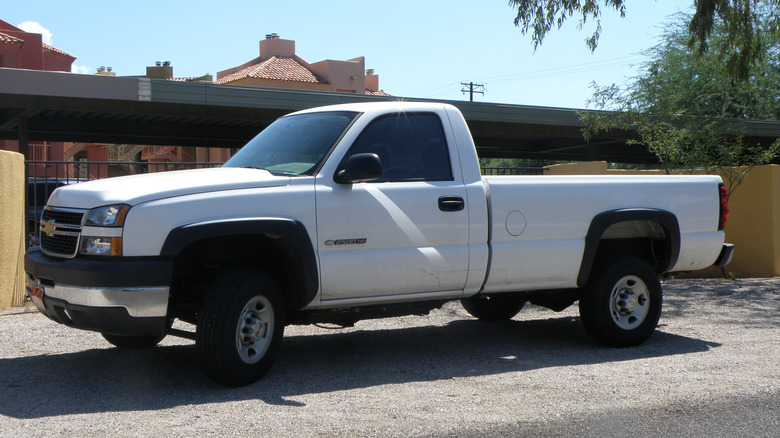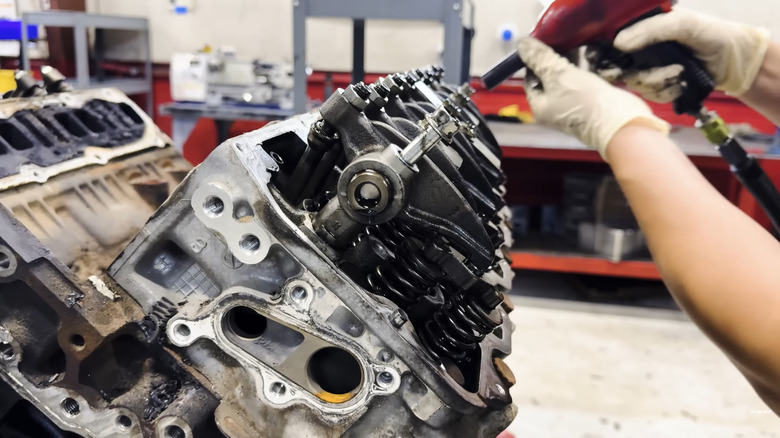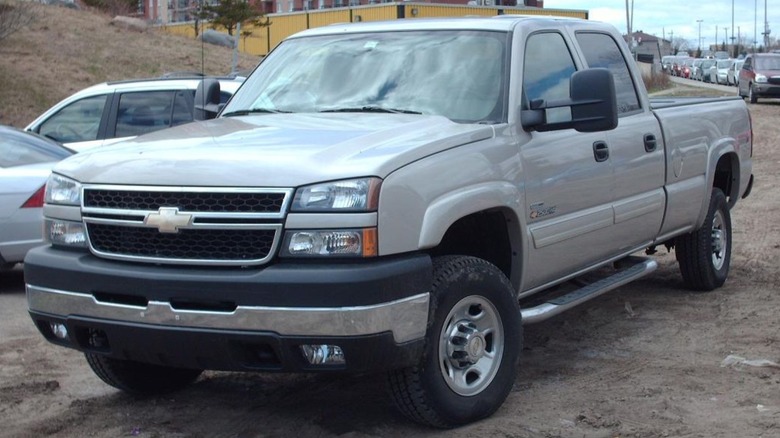Why Chevy Fans Consider This The 'Holy Grail' Of Duramax Engines
Over the last century, Chevrolet has rolled out several impressive engines, from the Gen I 350 small-block V8 and the Gen III Vortec 5300 V8, both of which we included on our list of the most reliable Chevrolet engines, to hugely powerful units like the LT6 and LT7.
With the turn of the century, the brand introduced the Duramax line of diesel engines, a powerful family that perfectly combined reliability and power, so much so that it would go on to dominate the 21st century truck engine market, alongside the Power Stroke and Cummins.
So far, this line has gone through seven main generations. Among these is the LBZ, which GM offered between 2006 and 2007. Ask around, and many Chevy and GM fans will agree that this is the Holy Grail of all Duramax engines, and rightfully so. The LBZ had a lot of great things going for it, key among those being performance and overall durability, the latter of which wasn't hampered by emissions control technology that subsequent engines would have to endure.
Additionally, this engine was the first to be paired with the six-speed Allison 1000 automatic transmission, which could handle high torque without breaking much sweat. Of course, these aren't the only reasons why the LBZ is as legendary as it is today.
A worthy successor to the LLY Duramax
While the first Duramax, the LB7 6.6-liter Duramax, came out swinging, with enough horses to make Dodge and Ford notice, the LBZ is where Chevy showed the diesel engine world it had what it takes to build a capable powertrain. Before the LBZ, Chevrolet had relied on the LLY to meet its diesel engine needs. While the engine itself had a few saving graces, such as a relatively reliable exhaust gas recirculation (EGR) system to help keep emissions under control, some users alleged that it tended to overheat.
The next release borrowed from the LLY, using a few of the engine's parts in its build. Even so, with 360 hp and 650 lb-ft of torque, it had a 50 hp advantage over the LLY's 310 hp, along with a 45 lb-ft more torque than the LLY. Among the improvements that enabled it to achieve this power increase were a thicker engine block that featured more robust bearing regions and stronger, forged steel connecting rods.
Chevy paired these beauties with new cast-aluminum pistons for a lower compression ratio and the CP3 high-pressure common-rail fuel system from Bosch, the one that also appeared on several Cummins engines. However, this one's pressure was increased from the LLY's 23,000 psi to more than 26,000 psi, which meant more power.
The LBZ had a few tricks up its sleeve
As you can already see, GM was getting it right with the LBZ, and the improvements didn't stop there. Additional mechanical improvements included a larger turbo inlet manifold compared to the LLY, which, of course, boosted the engine's power output even more. To improve fuel efficiency, the engine was equipped with a 32-bit E35 engine control module (ECM), which served as the central management unit, using software calibrations and data from various sensors to optimize engine performance, fuel efficiency, and emissions.
Last on the list of notable improvements was the Allison 1000 automatic transmission pairing. As mentioned before, it's a six-speed unit, an upgrade from the LLY's five-speed, and it could handle more power. Combined, all these improvements made the LBZ a beast that wasn't only powerful, but also durable, reliable, and compliant with the emissions standards of the time. The LBZ was also the last Duramax without a diesel particulate filter (DPF), which lowers emissions, yes, but also negatively impacts fuel economy and, depending on how you drive, might clog up and cause huge problems.
The LBZ came out with a bang, and it won hearts during its brief availability. It is important to note, however, that the engine faced a few problems, including pistons that were susceptible to cracking, particularly at higher power levels. Carbon buildup in the turbo's unison ring could cause it to seize, leading to stuck turbo vanes. All these problems aside, the LBZ still remains the Holy Grail of all Duramax engines.


